There’s no travel experience quite like the road trip. Unlike travelling by boat, train or plane, the road trip gives us control of our own destiny – to stop and gawp, to get lost, to pick playlists, to pick fights with sat-navs, parking spots and one another. There is a reason there are so many metaphors about roads; so many road-trip movies and songs, from Thelma & Louise to Willie Nelson. They offer the tantalising possibility of a narrative, especially after a year when the prevailing narrative has been one of confinement. When you’re ready to hit the road, here are 10 of the best road trips in Europe. Happy driving.
GOTTHARD AND OBERALP PASSES, SWITZERLANDApproximately two hours from Biasca to TomaseeSwitzerland is a giant road trip waiting to happen; a nation seemingly built for teutonic machines with smooth steering and tactile upholstery. Two of its most spectacular high passes meet at the ski town of Andermatt, which has been having a renaissance ever since the super-luxe Chedi hotel opened in 2013. From the Italian-speaking valley town of Biasca to the south, the Gotthard Pass rises up the rocky mountain in a series of steep hairpins. It’s worth passing through Andermatt to the plunging Schöllenen Gorge on the old Devil’s Bridge, named because local herdsmen once believed it so hard to traverse the gorge that they wished the devil would build a crossing. But if you turn back to Andermatt and head east, the Oberalp Pass is another beauty – seven miles of steep, winding road to Lake Toma, the source of the Rhine, with epic mountain views on every switchback.GETTY IMAGES
SALENTO, ITALYApproximately 10 hours round trip from BariItaly has more than its share of legendary drives. But for something a bit rawer than the Amalfi Coast, Sicily or Tuscany, Puglia’s dry Salento region (aka the heel) is the Italian answer to Cornwall – with its olive groves, cliff-jumping kids and unfussy cucina povera. Coastal roads run almost all the way round the heel, from the plunging limestone stacks and rocky bays of the outer east coast to the limpid tranquillity of the west coast, with white-sand beaches like the long and gloriously named Punta Prosciutto. Lecce, the Florence of the south in the heart of Salento, is a baroque fantasy of gargoyles and limestone amphitheatres. There are handsome towns such as Gagliano del Capo, where the converted 19th-century Palazzo Daniele is the smartest boutique hotel around. But, at its core, Greek-influenced Salento is an escape – the opposite of a guided tour, it is a place of wild swims under limestone bluffs, and open roads through the ochre landscape.GETTY IMAGES
ATLANTIC DRIVE, IRELANDApproximately two hours round tripThe Wild Atlantic Way covers the entirety of Ireland’s west coast: a 1,500-mile epic of monster surf breaks, glacial fjords and Star Wars-ready stacks, which makes Scotland’s North Coast 500 look like a Sunday drive. The Atlantic Drive on rugged Achill Island, on the western edge of County Mayo, offers just a taster. This is a wild place of sheep, blowholes and Ireland’s highest sea cliffs, home to ancient stone villages and sandy beaches such as Keem Bay, which looks almost tropical on a good day. Seafood chowders and Achill lamb appear on the menus at local haunts such as Gielty’s, and there’s often live music at cosy pubs including little old stone Lynott’s or sea-facing McLoughlin’s. Stays tend to be homely; the 200-year-old Beach Cottage facing the sandy bay at Dugort is all reclaimed cosiness.GETTY IMAGES
TRANSFAGARASAN, ROMANIAApproximately 90 minutes one wayIt’s only 56 miles long, and is often closed until late June because of snow in the Southern Carpathians’ Fagaras Mountains – but the Transfagarasan, with its serpentine hairpins snaking up from historic Curtea de Arges towards the high Balea Lake, rivals the Stelvio Pass in northern Italy as the most renowned stretch of road in Europe. It was built in the 1970s by Ceausescu to give him a military advantage in case of a Soviet invasion, and hundreds of people are said to have died while building ‘Ceausescu’s folly’, often from blasting dramatic tunnels through the mountains with dynamite. The brutal dictator wasn’t thinking about 21st-century visitors, but the road provides an almost poetic connection between Wallachia in the south and Transylvania in the north. The charm of Transylvania’s forested valleys and gothic castles is well-known, but the region is smarter than many expect, with cool cities including student-y Cluj-Napoca and more and more cool stays, such as the Bethlen Estates, a gorgeous villa in an old castle caretaker’s house in the country.GETTY IMAGES
ARCTIC COAST WAY, ICELANDApproximately eight hours one wayIceland is one of Europe’s great road-trip destinations, and there’s a lot to be said for going all the way round Route 1, which circumnavigates the whole country. But if you only do one stretch, make it the Arctic Coast Way in the north, which has all the geysers, crashing waterfalls and steaming baths of any Icelandic fantasy, but with fewer tourists than the Golden Circle and the south coast. The coast-hugging route runs from little Hvammstangi in the west to Bakkafjordur in the far east, but if you’re pressed for time you might only make it as far as the salty whale-watching town of Husavik. The trip could be pegged as a slow immersion into the Icelandic obsession with hot bathing – from the rudimentary springs dug by the local farmer at the end of the road in Grettislaug to the sharply contemporary Hofsos pool built into the hillside on the other side of the Skagafjordur; from the cloud-shaped Geosea baths at Husavik to the Myvatn Nature Baths near Akureyri, a quieter alternative to the Blue Lagoon. Or it could be about pure deep-nature escapism – maybe with a stay at Deplar Farm on the windswept Troll Peninsula, where horses outnumber people, and taking a detour to Dettifoss, a great deafening slab of water that’s the second most powerful in Europe (behind Switzerland’s Rhine Falls). But, really, this isn’t a drive that’s about sights; it’s about being lost in huge landscapes and geological reveries, wondering just what mad forces of nature created all of this.GETTY IMAGES
BARCELONA TO MONTPELLIERApproximately six hours one wayThe drive from Barcelona to Montpellier is a coastal jaunt and a cultural education in one. The stretch of the Costa Brava on the Spanish side was the site of a post-Michelin creative foodie revolution, first with Ferran Adria’s El Bulli in little Roses, and then with the Roca brothers’ El Celler De Can Roca. The pretty, blue-hued coastal town of Cadaques inspired Miro, Picasso, Duchamp and especially Dali, who had a higgledy-piggledy home here; while Collioure, across the border, was where Braque, Matisse, Derain and the rest gave rise to Fauvism. More to the point, it’s a gorgeous drive, from the cobbled buzz of Girona to seaside Cadaques, all whitewash and cobalt blue at spots such as the arty Hotel Villa Gala. Beyond Collioure and the tight, citrus-hued alleys of Perpignan, coastal towns give way to châteaux and Languedoc wineries, on the way to elegant Montpellier, with its graceful old hôtels particuliers.GETTY IMAGES
BORDEAUX TO BILBAOApproximately six hours one wayThis might just be the most sophisticated surf jaunt on the planet. From Bordeaux, the classic route is to head up to the Cap Ferret peninsula, with its oyster shacks, wooden pinasse fishing boats, giant sand dunes and elegantly weathered hotels including La Maison du Bassin. To the south, Hossegor sits on Europe’s longest uninterrupted stretch of sand, its surf-slow vibe epitomised by La Cabane du Penon, a wooden shack on the beach. Beyond, Biarritz remains a wonderfully stylish contradiction, where surf shops sit next to jackets-for-dinner restaurants, with the glamour of Coco Chanel still echoing between the marble pillars at the Hotel du Palais. It’s less than an hour to San Sebastian and the world’s greatest pintxo crawl (those anchovies at Bar Txepetxa), and another hour more to Bilbao, where the icy-minimal Tayko Bilbao hotel fits with the city’s sleek post-Guggenheim vibe.GETTY IMAGES
THE LOFOTEN ARCHIPELAGO, NORWAYApproximately nine hours returnÅ, a village of stilted red fishing cabins at the western edge of the Lofoten archipelago, is pronounced somewhere between ‘awe’ and ‘oh’. Both would be suitable reactions to one of Europe’s most beautiful coastal drives – a joyous island-hop of craggy peaks, model-railway villages and wooden fish-drying racks, which still feels like discovering a lost secret.
- The standard route starts at Harstad/Narvik Airport, high in Arctic Norway, and follows an E10 road that gets more spectacular as you head west over pleasingly curving bridges and through long tunnels. Highlights include the fishing town of Henningsvær, which stretches onto a thin promontory of clapboard galleries and seafood restaurants, ending in possibly the world’s most beautiful football pitch, surrounded by sea-beaten rock. Further west, Unstad is a glacial valley with a curving surf beach and surf camp, where Norway’s first surfers made boards from refrigerator foam and Beach Boys album covers some time in the 1960s. Some Norwegians say Moskenes, the municipality at the western edge of the archipelago, is the most beautiful in the country. Yet part of Lofoten’s charm is that it still isn’t overdone. Tourism barely existed here until the late 1980s, and many of the hotels are in converted rorbuer fishing cabins, such as Anker Brygge, in an old fish-landing station on the harbour in Svolvær, or the converted cabins of Hattvika Lodge, in Ballstad.GETTY IMAGES
- LISBON TO MELIDESApproximately four hours round tripUntil relatively recently, the thatched beach shacks, cork trees and arty crowd in Comporta managed to just about creep under the radar. Now, after an Assouline book celebrating the sandy peninsula, it’s up there with Tulum, Capri, Mykonos and the rest. That doesn’t mean it isn’t still worth the drive south from Lisbon – strict development rules mean it’s not overrun, and hotels such as the Sublime and Quinta da Comporta have perfected a certain effortless salty modernism. Now, there are faint murmurs of buzz further south: specifically, half an hour south in go-slow Melides, where Philippe Starck already has a home and Comporta long-timer Christian Louboutin is building a boutique hotel. While you wait, it’s worth the drive to swim among the limestone stacks on quiet Praia da Gale, before heading inland past the vineyards and paddy fields on the road back to Lisbon.GETTY IMAGES
THE APPLECROSS CIRCULAR, SCOTLANDApproximately two-and-a-half hours return to LochcarronThe windswept Applecross Peninsula, on Scotland’s north-west coast, feels like the land that time forgot – and it very nearly did. Until the early 20th century, the peninsula was only accessible by boat – when the notorious Bealach na Bà, or the Pass of the Cattle, was built to access the western settlement, looking over to Raasay and the Cuillins of Skye. The single-track road is the steepest in the UK, rising up a craggy glacial valley with a series of dramatic switchbacks, before dropping down to a neat row of white stone houses known as Applecross (it’s technically called Shore Street). It’s worth a stop at the excellent Applecross Inn, which serves local seafood and a seriously good fish pie, before carrying on round the rest of the peninsula, via the tidal pools of white-sand Applecross beach and the shores of Loch Torridon. It’s possible to do a loop from Lochcarron, the world capital of tartan, but the Applecross Peninsula is also part of the 500-mile North Coast 500. So you could just carry on, past gorgeous Ullapool and up the north coast to John o’Groats.
Source: cntraveller.com


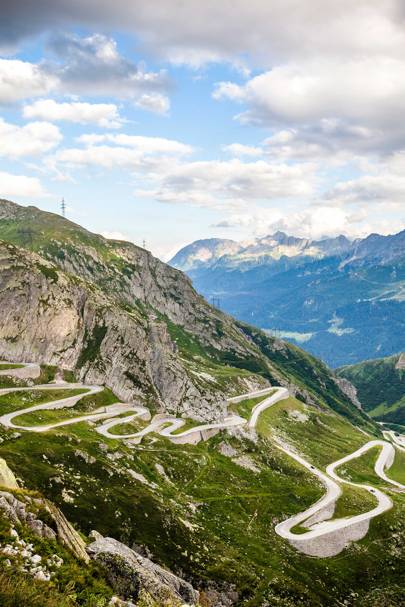 GOTTHARD AND OBERALP PASSES, SWITZERLANDApproximately two hours from Biasca to Tomasee
GOTTHARD AND OBERALP PASSES, SWITZERLANDApproximately two hours from Biasca to Tomasee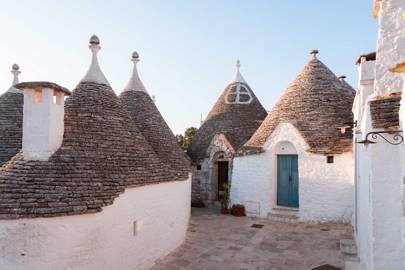 SALENTO, ITALYApproximately 10 hours round trip from BariItaly has more than its share of legendary drives. But for something a bit rawer than the
SALENTO, ITALYApproximately 10 hours round trip from BariItaly has more than its share of legendary drives. But for something a bit rawer than the 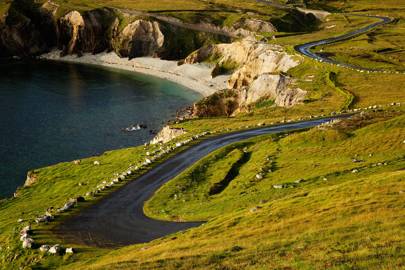 ATLANTIC DRIVE, IRELANDApproximately two hours round tripThe
ATLANTIC DRIVE, IRELANDApproximately two hours round tripThe 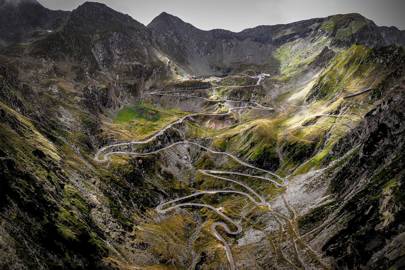 TRANSFAGARASAN, ROMANIAApproximately 90 minutes one wayIt’s only 56 miles long, and is often closed until late
TRANSFAGARASAN, ROMANIAApproximately 90 minutes one wayIt’s only 56 miles long, and is often closed until late 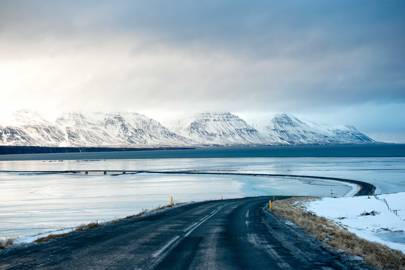 ARCTIC COAST WAY, ICELANDApproximately eight hours one way
ARCTIC COAST WAY, ICELANDApproximately eight hours one way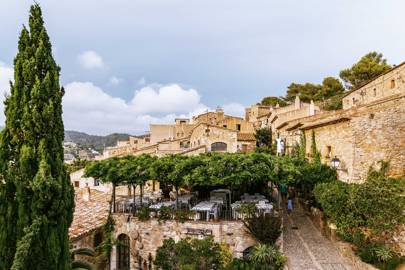 BARCELONA TO MONTPELLIERApproximately six hours one wayThe drive from
BARCELONA TO MONTPELLIERApproximately six hours one wayThe drive from 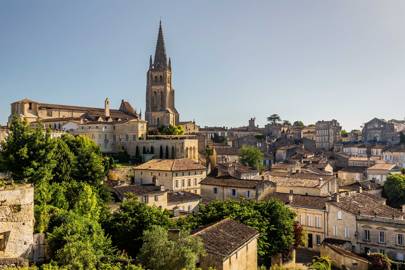 BORDEAUX TO BILBAOApproximately six hours one wayThis might just be the most sophisticated surf jaunt on the planet. From
BORDEAUX TO BILBAOApproximately six hours one wayThis might just be the most sophisticated surf jaunt on the planet. From  THE LOFOTEN ARCHIPELAGO, NORWAYApproximately nine hours returnÅ, a village of stilted red fishing cabins at the western edge of the
THE LOFOTEN ARCHIPELAGO, NORWAYApproximately nine hours returnÅ, a village of stilted red fishing cabins at the western edge of the 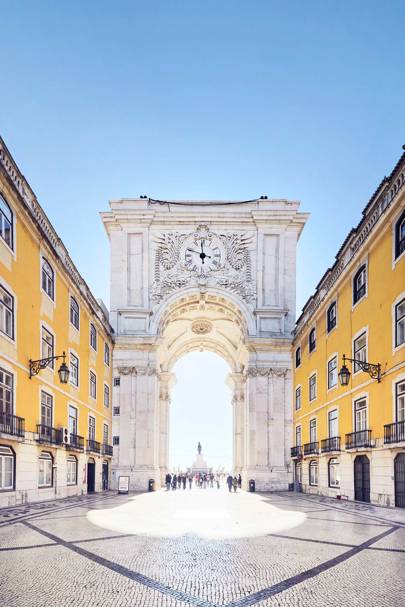
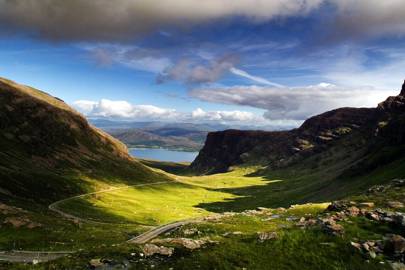 THE APPLECROSS CIRCULAR, SCOTLANDApproximately two-and-a-half hours return to LochcarronThe windswept Applecross Peninsula, on
THE APPLECROSS CIRCULAR, SCOTLANDApproximately two-and-a-half hours return to LochcarronThe windswept Applecross Peninsula, on 





















